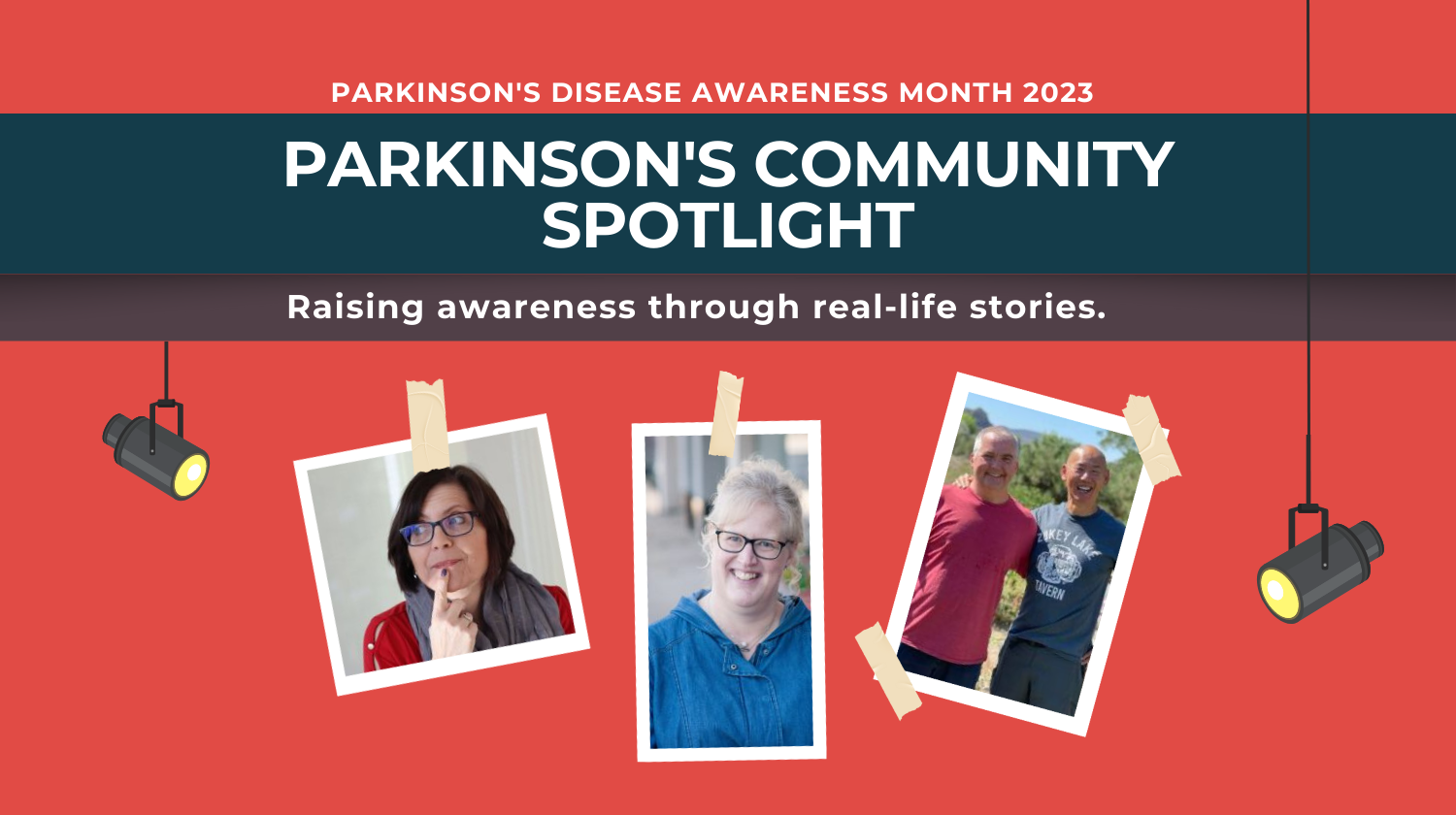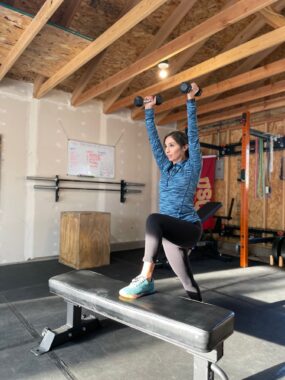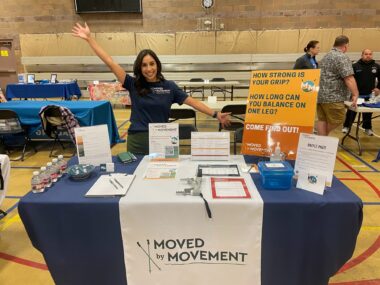In Parkinson’s care, it’s never too late for movement and exercise


Katie Nathan performs an exercise demonstration. (Photos courtesy of Katie Nathan)

This is Katie Nathan’s story:
Movement and exercise are vital for improving and maintaining our health, and this couldn’t be more important for people with Parkinson’s disease.
I’m a licensed physical therapist who specializes in Parkinson’s care. I’ve been practicing neurologic physical therapy for more than seven years and have specialized in Parkinson’s care for the past four years.
I became interested in Parkinson’s care because of the positive and unique healing abilities movement and exercise have on people with the disease. Research supports that exercise is the single best intervention for Parkinson’s without negative side effects. Through exercise and movement, I’ve witnessed countless clients regain mobility, improve, and thrive.

Katie Nathan at the Moved by Movement fair booth.
Here’s why I love my work as a neuro physical therapist. I had a client who was worried about dancing at his daughter’s 10-year wedding anniversary party, which was only two months away. He has Parkinson’s and wanted to improve his endurance and balance so he’d feel confident her and his wife at the party.
During our sessions, we worked to get his dance steps down. After a sweaty and fun eight weeks, he felt confident, excited, and ready to show off his moves. A week after the party he came to me and told me he was the last one off the dance floor!
I was so proud of how well my client’s mobility and balance had improved. But that was nothing compared to the joy I felt knowing he was able to enjoy such a special day with his family because of it.
I’m always amazed by how much improvement is possible with the right kind of exercise and movement. The right kind is individualized from person to person, but what the research supports is three days a week or more for the best outcomes. With consistent exercise, you can make lifelong changes that could slow the progression of Parkinson’s. And when you have the right people on your team — the right exercise providers, rehab specialists, and doctors who specialize in Parkinson’s, better results can happen.

Katie Nathan attends a Nevada Academy of Family Physicians meeting.
It’s never too late to improve your health with Parkinson’s. If you’re new to exercise or unsure about what exercise to do, I would recommend starting with seeking care from a physical therapist who works with people with Parkinson’s and/or the physician managing your Parkinson’s care.
For more information and resources and/or questions about Parkinson’s disease, see my website at >movedbymovementpt.com.
Happy movement!
In recognition of Parkinson’s Awareness Month in April, the Parkinson’s Community Spotlight campaign features a series of stories highlighting the real-life experiences of people affected by Parkinson’s disease written in their own words. Follow us on Facebook and Instagram for more stories like this, using the hashtag #ParkinsonsSpotlight, or read the full series.






